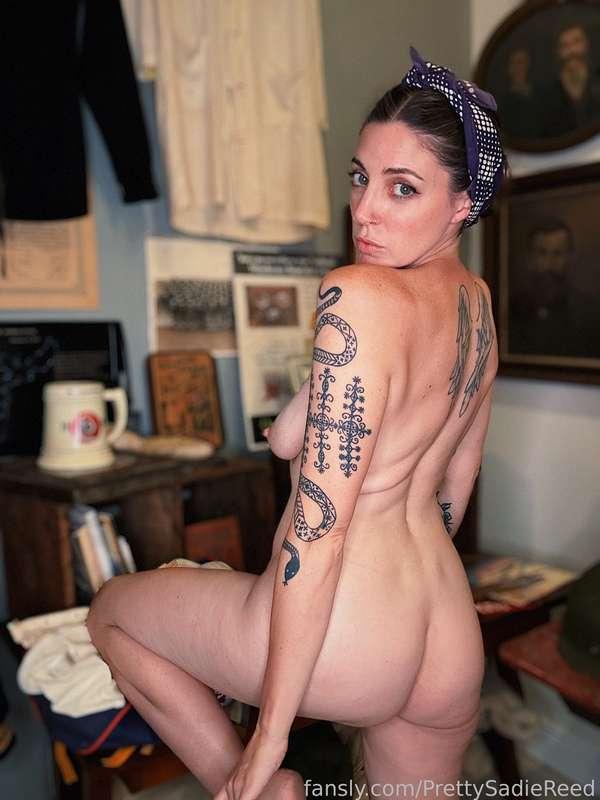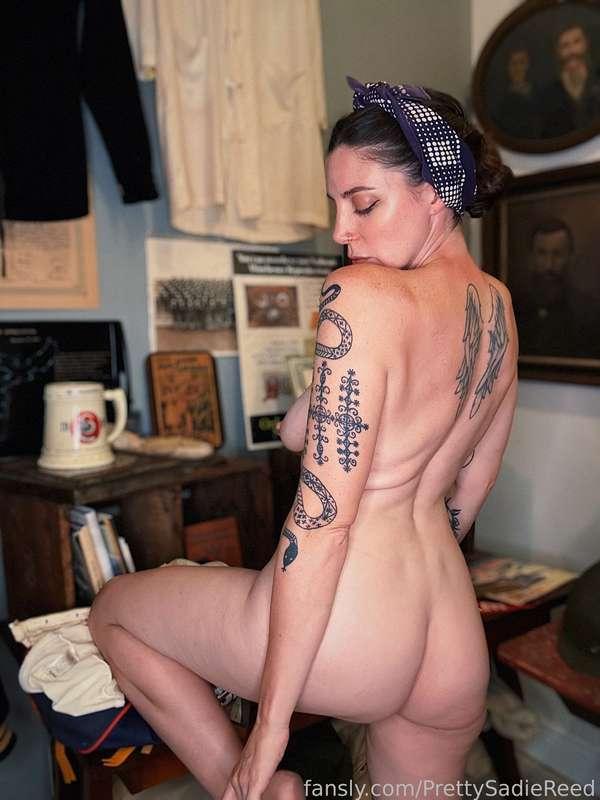prettysadiereed
The 1940s-style bandana came out because of women entering the workforce during WW2. While a large of number of women DID work before the war, by and large they were not working in factories with heavy machinery. With women entering the workforce in droves to take the place of men, they were subject to a huge lack of safety protocols or appropriately fitting uniforms to keep them safe - women’s sizes weren’t manufactured on a large scale at that time. As a result, they wore men’s dungarees and cuffed the legs and rolled up the sleeves of men’s workwear shirts. Perhaps most the most iconic is the bandana to contain the hair, as it appeared on Rosie the Riveter, which became ubiquitous with a working woman of the 1940s. That said, the NY Times still ran an article entitled “Training for War Work to Help Women Keep both Health and Looks.” that instructed women to still look like a perfectly presentable housewife after leaving the factory. And they weren’t the only ones. Magazines still pressured women to look like a pinup in her factory gear by offering self-directed quizzes to determine their “feminist quotient” in the workplace. That said, the Hollywood pinups of that time began changing their hair, donning bandanas and pinning up their hair as a way to inspire the every day woman to follow suit in the name of safety. I didn’t get the memo on the workwear but I did learn how to tie my hair in a bandana for this lesson 💋 #fyp #nude #pinup #retro #bush #spread #bush #milf #hotwife #ass
Published: August 14th 2024, 7:00:57 pm



